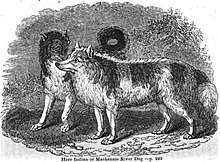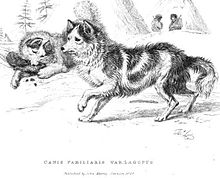NW Territory Woodsman
40 Cal
Ok, not quite sure if a dog is considered camp or trail gear, but my question is(google is failing me) what would a early18th century eastern woodland native dog look like and what variety of dog would be it included in, spitz,hound, etc... I know its not so much breed, but type. Since I have that down, on the web I have found a dog called a carolina indian dog, but I'm still not quite sure exactly what it is. Other dogs that seem to be fairly old and native to north america include chawawa(spelling) type dogs, and malamutes and inuit dogs. So put it this way, what would early 18th century Shawnee dogs be like in the ohio valley? And would they differ from native american dogs in new england(Abenaki), or the western great lakes(Ojibwa)?
This might be a hard question, thats why I'm hoping one of you might know a close enough answer.
NWT Woodsman
This might be a hard question, thats why I'm hoping one of you might know a close enough answer.
NWT Woodsman









